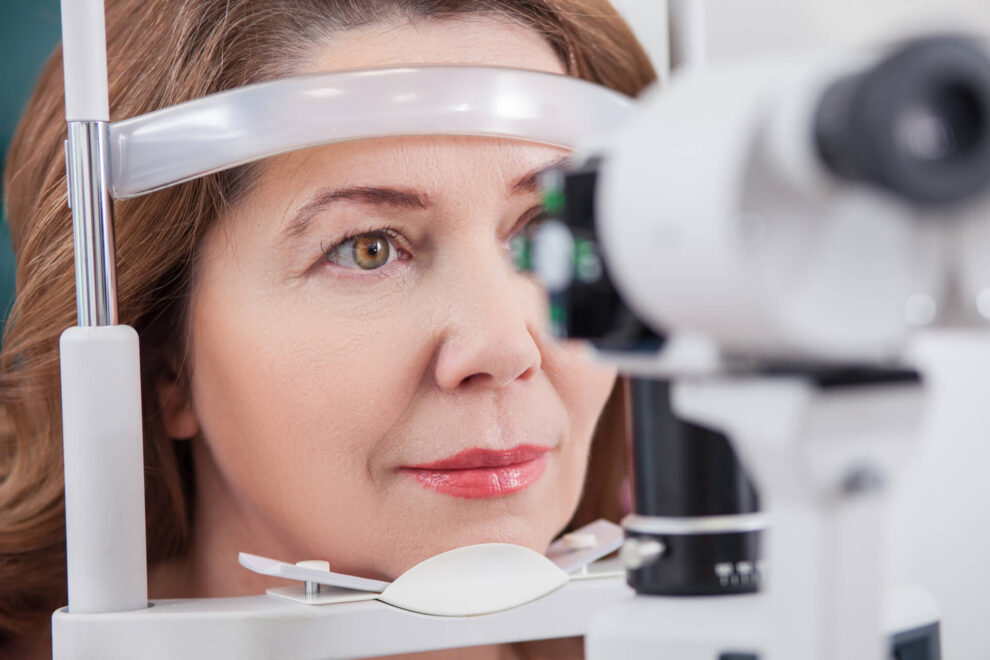Posted by: Kentucky Eye Institute in General Eye Health

Retinal disorders are the leading cause of blindness and vision impairment. And while there are over one billion people in the world who have some level of vision impairment, more than 80% of those impairments are treatable.
This is why early identification and intervention is so important. Some people are at a higher risk of developing a serious retinal disease than others, so early medical attention is crucial, especially if you notice any changes in your vision.
Let’s take a look at 5 of the most common retinal disorders and how your eye doctor can be of help:
1. Floaters
Do you notice small spots in your vision? If so, you may have what’s referred to as “floaters”. Floaters can occur as a result of the natural aging process or they can happen among those suffering from severe nearsightedness. When the jelly-like substance of the eye becomes more liquid, small clumps can form and cast a shadow on the retina causing these floaters to form.
They can also be the result of a torn retina. If the tear is never repaired, retinal detachment can take place due to fluid building up behind the retina causing it to separate itself from the eye. Your eye doctor can offer treatment in Lexington, and the sooner you get in for an appointment, the better.
2. Diabetic Eye Disease
One of the most common retinal disorders includes diabetic eye disease. Patients with diabetes are among the most susceptible to developing some form of retinal damage including floaters, dark spots, blurry vision, double vision, trouble with their peripheral vision, or pressure and pain in one or both eyes. They might also notice “flashing lights” or rings. Diabetics are also at an increased risk of developing cataracts, glaucoma, or retinal detachment.
In some cases, laser surgery is one of the treatment methods that eye doctors in Lexington can provide to help those suffering from any eye disease sparked by diabetes.
3. Macular Degeneration
Macular degeneration is a condition that is very common among people age 55 and older and affects around 10 million people in the U.S. This age-related retinal condition causes mild to severe vision loss and the symptoms include difficulty focusing on details, blurry central vision, and warped straight lines. Some people develop blind spots as their condition gets worse.
Timely treatment of macular degeneration is crucial and can reduce any future vision loss. Treatments for macular degeneration might include laser treatments or intravitreal injections.
4. Retinal Detachment
Retinal detachment can happen when there is too much fluid build-up behind the retina which then causes a separation. There are some additional risk factors that can lead to this detachment that you should be aware of including:
- A previous retinal detachment in your other eye
- A genetic predisposition
- Extreme nearsightedness
- Other injuries to the eye
- A previous cataract surgery
- Other disorders of the eye present
- A decrease in your vision
As mentioned above, the presence of floaters is often indicative of a forming retinal detachment and should be addressed as soon as possible. If a patient doesn’t seek treatment right away, they could experience permanent vision loss.
Treatments for minor retinal detachments include laser treatments and pneumatic retinopexy (this is an injection of a gas bubble into the eye). For more severe detachments, a scleral buckle surgery or vitrectomy is necessary.
5. Retinitis Pigmentosa
Retinitis pigmentosa” is a blanket term for many kinds of genetic conditions that can lead to retinal degeneration. Vision loss will gradually decline over time as the cones and rods of the eye begin to die.
Some common retinal disorders that lead to vision loss include Refsum disease, rod-cone disease, Bardet-Biedel syndrome, Usher syndrome, and Leber’s congenital amaurosis. These are all classified as retinitis pigmentosa conditions.
When these types of degenerative conditions first take place, the rods of the eye is the first to be affected. Then the break-down moves to the cones of the eye. Patients will notice earlier symptoms such as night blindness while others experience color blindness or a loss of central vision.
Surprisingly to some, young adults and adolescents are often among the most vulnerable to some of these diseases since many of them are inherited in nature.
Are Retinal Disorders Preventable?
As you can see, there are various kinds of retinal diseases and conditions. While not all of them are preventable, there are still many efforts that people can make to lessen the risk of developing retinal disease. Some of these efforts include:
- Making and keeping regular eye exams
- Eating a nutrient-dense diet
- Maintaining a healthy weight
- Getting enough sleep consistently
- Reducing participation in eye-straining activities
- Protecting your eyes from harmful UV rays
If you suspect you have a developing retinal disease, it doesn’t have to take over your life. Catching the condition in its early phases is essential to successful treatment which is why it’s so important to see your eye doctor in Lexington, Kentucky regularly. Report any changes in your vision to your eye doctor immediately. The longer you wait, the higher your chances of sustaining irreversible damage.
Make an Appointment Today!
Now that you’ve learned a little bit more about retinal disorders and what to look out for, we encourage you to contact us with any concerns and make an appointment today.
Our dedicated staff is on hand to answer any questions you might have and our expert eye doctors have the experience needed to treat any retinal disorders that you may be dealing with. Give us a call and we’ll be happy to schedule your appointment!
